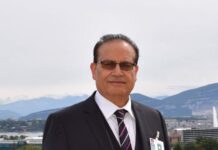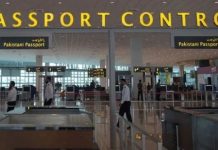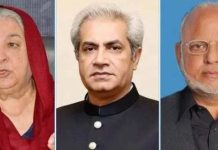If there is one place Saudi Arabia was happy to be low on the totem pole, it was Iran. Those days are over. Strategic thinkers in Tehran have upgraded their perception of the threat posed by the kingdom.
Rather than simply viewing Saudi Arabia as a Middle Eastern extension of the United States and a political rival, Iran today sees the kingdom as a security threat.
Iran’s reevaluation of Saudi Arabia comes as the kingdom focuses on enhancing its military capabilities, Iraqi-mediated talks between the kingdom and the Islamic republic stall, and hopes have all but faded for a revival of the 2015 international agreement that curbed Iran’s nuclear program.
In military terms, Saudi Arabia was in Iranian eyes, for the longest period, little more than an arena for targeting US interests.
That perception was reinforced when Saudi Arabia opted not to retaliate on its own for Iranian attacks on Saudi oil facilities in 2019. These attacks briefly knocked out five per cent of global oil supply.
It was the first time that Iran hit targets on Saudi soil.
The kingdom refrained from hitting back even after the United States made clear that it would not respond.
Nevertheless, Iran has since replaced its disdain for Saudi Arabia as a military force with a strategy of deterrence.
This amounts to a reevaluation of the threat posed by its perception of being surrounded by hostile or adversarial countries and targeted by the United States and Israel. This is with regime change as the ultimate goal.
Hampered by crippling US sanctions, the shift in thinking reflects Iran’s inability to compete with Saudi Arabia’s economic and financial muscle, lobbying in Western capitals, and its influence on US and Israeli policy.
In addition, Saudi-backed media, particularly Iran International, a Farsi-language satellite broadcaster, have gained traction among Iranian anti-government demonstrators.
The demonstrations rocked the Islamic republic by sustaining nationwide protests for some four months in the second half of last year.
Initially based in London, Iran International last month moved its operations to the United States after British police and intelligence said they had foiled “15 plots since the start of 2022 to either kidnap or even kill British or UK-based individuals perceived as enemies of the regime.”
The station’s appeal was its coverage of the protests that included information that was censored in reporting on state-controlled Iranian television and radio networks.
Initially, Fahad Ibrahim Aldeghither, a former chairman of Zain Saudi, the kingdom’s third-largest telecoms provider, owned 75 per cent of the shares of Volant Media that operates Iran International, and its sister channel, Afghanistan International.
Another Saudi media figure, Adel Abdulkarim Alabdulkarim, acquired Mr. Aldeghither’s shares in 2018.
That year, The Guardian reported that the court of Saudi Crown Prince Mohammed bin Salman had funded Iran International to the tune of US$250 million.
In recent months, Iranian official have become more assertive in their warnings to the kingdom.
“I am warning the Saudi ruling family…. Watch your behaviour and control these media … otherwise you will pay the price. This is our last warning because you are interfering in our state matters through these media. We told you, be careful,” said Hossein Salami, commander of the Islamic Revolutionary Guards Corps.
Iran’s intelligence minister, Esmail Khatib, said Iran was running out of patience.
“Until now, Iran has adopted strategic patience with firm rationality, but it cannot guarantee that it will not run out if hostilities continue,” Mr. Khatib said.
Referring to several unidentified Gulf monarchies, he threatened that “if Iran decides to retaliate and punish, glass palaces will crumble, and these countries will not experience stability anymore.”
Iran’s upgraded perception of the Saudi threat is further fuelled by massive Saudi expenditure on defense, Saudi efforts to build a domestic defence industry, and its cooperation with the United States in turning the Saudi military into an effective combat force.
Beyond Saudi Arabia’s acquisition of sophisticated US and European weapon systems to which Iran has no access, the kingdom’s efforts to build a domestic defense industry aim to create capabilities that target the backbone of Iranian defense strategy, drones and ballistic missiles.
Saudi Arabia has in recent years agreed with China to build a drone manufacturing facility in the kingdom. The facility will be China’s first overseas production plant.
The US and Saudi Arabia intend to hold their first-ever experimental counter-drone exercise at the end of this month.
Satellite imagery in recent years suggests that the kingdom has built missile bases with the help of Chinese technology.
As Iran inches ever closer to nuclear weapons capability, Saudi Arabia is pushing to build nuclear power plants. Saudi Arabia is also aiming to acquire the knowledge and technological building blocks to match Iran if it crosses a threshold for the production of nuclear weapons.
Saudi leaders, including Crown Prince Mohammed bin Salman have warned that Saudi Arabia would develop its own capability if Iran becomes a nuclear power.
Saudi Arabia has denied reports that it was building a facility for extracting yellowcake from uranium with the help of China.
Producing yellowcake is part of the process leading to the enrichment of uranium.
Nevertheless, the Saudi energy ministry said it was cooperating with China on unspecified aspects of uranium exploration.
At the same time, the kingdom insisted that mining its uranium reserves was part of its economic diversification strategy.
Last month, Saudi Arabia received bids to build its first nuclear power plant.
The kingdom plans to construct 16 nuclear power reactors in the next two decades at a cost of an estimated $100 billion.
In addition, Saudi Arabia has signed nuclear cooperation agreements with multiple countries, most recently last month with France.
“While both Riyadh and Tehran attempt to put a diplomatic communication mechanism in place, no meaningful reduction of threat perceptions has happened,” said scholar Abdolrasool Divsallar.
“Trends seem to indicate a hardening of both countries’ securitized approach to each other, complicating concessions on designing a pathway for bilateral de-escalation,” Mr. Divsallar added.
Thank you for joining me today. I hope you enjoyed the newsletter and/or podcast. Diplomats, policymakers, investors, executives, journalists and academics listen to my twice-weekly podcast and/or read my syndicated newsletter that is republished by media across the globe. Maintaining free distribution ensures that the podcast and newsletter have maximum impact Paid subscribers help me cover the monthly cost of producing the newsletter and podcast. Please consider becoming a paid subscriber. You can do so by clicking on Substack on the subscription button at www.jamesmdorsey.substack.com and choosing one of the subscription options or support me on Patreon at www.patreon.com/mideastsoccer. Please join me for my next podcast in the coming days. Thank you, take care and best wishes.
Dr. James M. Dorsey is an award-winning journalist and scholar, an Adjunct Senior Fellow at Nanyang Technological University’s S. Rajaratnam School of International Studies, and the author of the syndicated column and blog, The Turbulent World with James M. Dorsey.

















